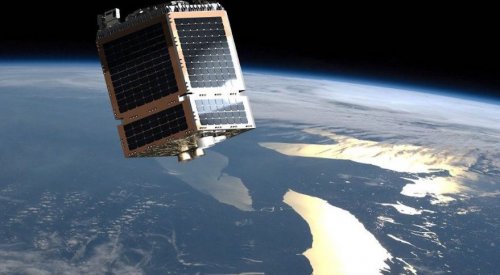VICTORIA, British Columbia — The Canadian government will support the development of low-Earth-orbit satellites that can bring internet services to rural parts of the country.
Finance Minister Bill Morneau announced a 100 million Canadian dollars ($82 million) initiative in the 2018 Canadian government budget released Feb. 27. The Liberal Party government wants to extend internet service to rural areas in the country and believes that low-Earth-orbit (LEO) satellites could prove to be the solution.
“Networks of LEO satellites have the potential to provide Canadians living in rural and remote areas with significantly improved access to Internet and wireless services at more affordable prices,” Morneau’s budget document noted. “LEO satellites, situated closer to the surface of the Earth than traditional high orbit satellites, can receive and transmit data with significantly improved response times, speeding up data services, while maintaining the benefits of satellite technology, including the ability to provide Internet across challenging landscapes at much lower costs than fiber-optic technology.”
The CA$100 million will be spent over the next five years. Canada will use the money on projects that are directly related to LEO satellites and next generation rural broadband, government officials said.
The government sees the initiative as creating high-technology jobs and potential export opportunities for Canadian firms.
Morneau didn’t get into specific details on how the funds would be dispersed or whether the Canadian Space Agency would be behind those decisions.
Last year the Canadian government outlined a streamlined licensing framework that would support the deployment of next-generation satellites. That action would allow more satellite-based providers to enter the market and extend high-speed internet services to Canadians in rural and remote communities across the country, Navdeep Bains, Canada’s minister of innovation, science and economic development pointed out at the Canadian Telecom Summit last June.
The federal budget announced by Morneau provides broad-brush details on spending initiatives and the current state of Canada’s finances. Specific details about the Canadian Space Agency, how much it will receive for its budget, and how it will spend that money will be contained in another government document expected in about a month.
A number of Canadian firms are already focused on the LEO market. Telesat of Ottawa, Ontario, has one demonstration satellite already in orbit as it prepares for a full constellation of 120 such spacecraft. The demonstration satellite was launched Jan. 12 on India’s PSLV rocket and is expected to reach its final orbit over the next two months.
The full constellation is expected to be operating by 2021.
Telesat says its LEO system is optimized to deliver enterprise-grade connectivity services and broadband access to the internet. One of the markets for the service is in bringing the internet to remote communities, it added.
Erwin Hudson, vice president of Telesat LEO, told the Canadian SmallSat Symposium in Toronto Feb. 15 that the firm is seeking partners to help fund development of its constellation.
Hudson said the firm expects to announce plans for manufacturing the full system in the coming months.
Xplornet Communications Inc., of Woodstock, New Brunswick, which offers rural internet connection has also turned to has also been focusing on improving rural broadband services, through the EchoStar 19 launched in December 2016 and ViaSat-2 launched in June 2017.
- Will ThinSats inspire the next generation of engineers and scientists?
- Telenor Satellite eyes even split between broadcast, connectivity businesses
- Earth science decadal report recommends mix of large and small missions
- SpaceX takes top honors in SpaceNews Awards for Excellence & Innovation
- Yahsat’s Mahmood on Brazil, Africa, Facebook and future satellites
Share with your friends

(0) Comments
This article comments are currently no :(